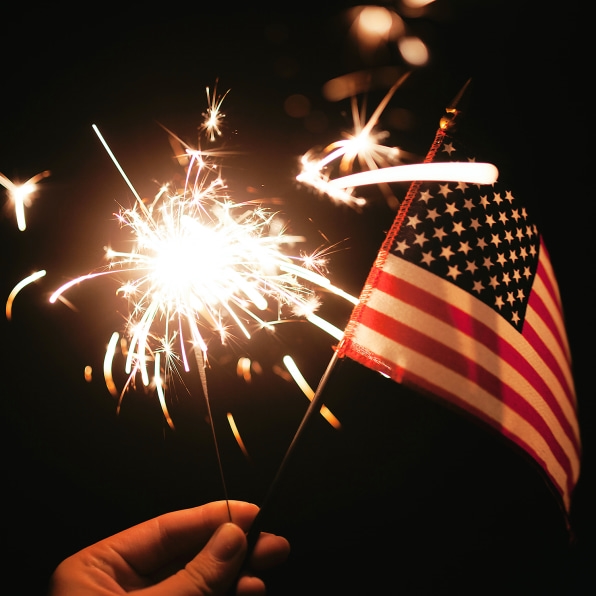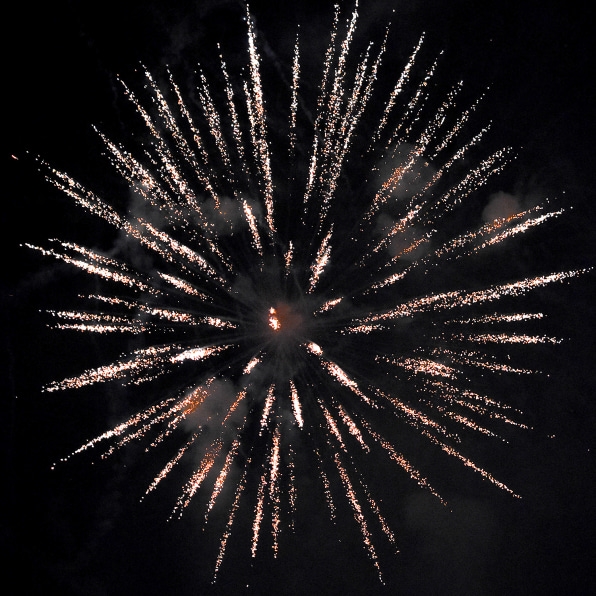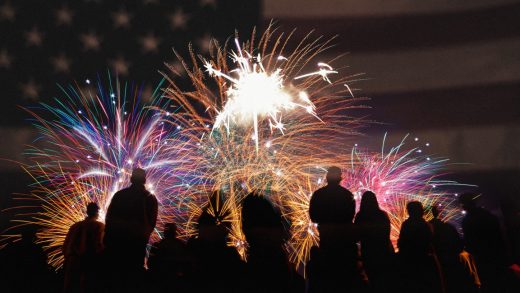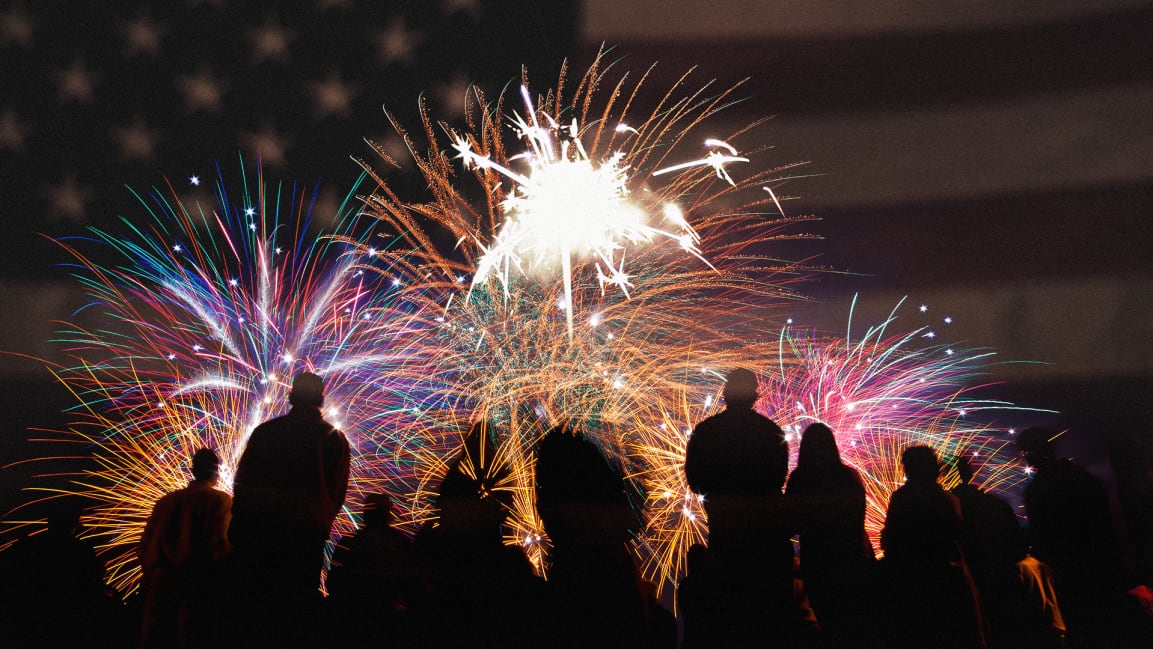This 4th of July maybe it’s time for a little hope
Maybe it used to be different. There must have once been some sense of awe—about the majesty of the enflamed sky and my own relative smallness beneath it—but I can’t remember when that might have been. For much of my adult life, my main response to Fourth of July fireworks has just been the rote ticking of a box and an urge to look at my phone. In fact, I no longer even try to feel anything; I know that I won’t, so why bother? It’s a feeling that can too easily stretch beyond the fireworks, to the very thing they’re celebrating.
What is one meant to feel on a day of patriotism in 2021 America? Most years, I imagine it’s a mixture of gratitude and superiority—basically, a Budweiser commercial—despite the fact that everyone I know seems to mostly just appreciate a day off of work and a barbecue with some friends.
Last year was certainly different. It was a bleak time to conjure the typical rah-rah spirit. As some doctors pointed out, the most patriotic thing anyone could do to celebrate was stay home and try to avoid repeating the COVID-19 spread that followed Memorial Day Weekend. Complicating matters, the holiday arrived after weeks of ceaseless protest inspired by George Floyd’s murder at the hands of police. Even more than most years, it was a moment ripe for dwelling on the insidious contradictions of a nation founded by slaveholders who yearned to be free. All in all, as the nation weathered existential crises on multiple fronts, canceling the Fourth of July altogether seemed like a sensible option.

This year, things are different.
Over 67 percent of U.S. adults are at least partially vaccinated against COVID-19, for a start. Scientists and politicians no longer have to play the part of Holiday Fun Police, enforcing an aura of solemn vigilance. We’re now free to move about the country again, or stay inside with friends, something that was not at all guaranteed last year. And signs of a post-pandemic economic recovery keep appearing, even if one hasn’t fully materialized yet. On the other hand, the most prominent result of last summer’s focus on systemic racism seems to be a broad, reactionary push to ban teachers from talking about systemic racism.
Between the vulnerabilities exposed by the pandemic and the racial disparities highlighted by the protests, last year should have been a game-changing teachable moment for Americans. Instead, we’ve collectively learned about as much as any child wanting to hear about the Tulsa Massacre in their classroom.
Just because crisis looms above practically every facet of American life doesn’t mean each of them is unavoidable.”
It’s hard to be optimistic about the future when so many people refuse to even acknowledge the past. Sometimes it just seems like the only options are to dismiss the reality of America’s deep-seated problems, or dismiss America entirely as a result of them. The idea of hoping for America to become its optimal self feels about as pointless as watching the same fireworks show every year and waiting to feel inspired.
“America is back!” has been President Biden’s rallying cry throughout his term so far. The rest of the world may be taking that message with a roll of the eyes, though. European leaders greeted Biden warmly at the G-7 summit last month, but also warily. Those leaders seemed eminently aware that there is precious little preventing the U.S. from sliding back into total chaos at any time.
It’s not as if we’d have that far to slide, either.
Everything feels so precarious in America right now. Buildings are collapsing. Heat waves are breaking records in unlikely places, even as climate change proposals are written out of a potential Infrastructure deal. White nationalist rhetoric on TV is finding an appreciative audience, voting rights are increasingly in jeopardy, and the delta variant keeps threatening to erase much of our hard-earned progress against COVID-19. It’s easy to look at all that we’re up against and feel hope fizzle out like a dud bottle rocket.

But only if you let it.
Wobbly things don’t always fall down. Murphy’s Law isn’t real, otherwise every plane would always crash, and no one would ever go out on dates. Just because crisis looms above practically every facet of American life at the moment doesn’t mean each of them is unavoidable. It just means a positive outcome isn’t promised. Rather than turn a blind eye to the coming calamities, or wallow in a warts-only vision of the country, I have decided to actively embrace hope for the future. The alternative is simply too depressing.
It takes work to root for America when you take a clear-eyed view of the country’s myriad flaws and the challenges we’re up against, but at this point, the only other options are nihilism and denialism.
Yes: power cables are currently melting in the Pacific Northwest, and I am going all in on optimism this Fourth of July. We will take more tangible action against climate change. We will secure our voting rights and fix our infrastructure. We will address systemic racism and inequality. We will defuse COVID-19 completely. Thinking this way won’t change a damn thing directly, but even if it just changes the way I feel when I think about the future, that might be enough for now.
America is on the brink of either fully collapsing or possibly becoming as exceptional as its popular self-conception. I know which one I want to happen.
Maybe positive changes beyond my own personal attitude are on the horizon. Maybe fireworks displays really will be different soon; if not this year, then next. We might quietly be on the brink of discovering Coneheads technology and scorching our retinas forever. The city could add an orchestra, throw in an open bar, and—what the hell?—offer emotional support puppies. Who knows! Almost anything could happen, almost everything won’t, and all that each of us can do is make our own little contribution whenever possible to the outcome we want most.
And we can hope. What better time to look on the bright side than the brightest night of the year?
(52)



